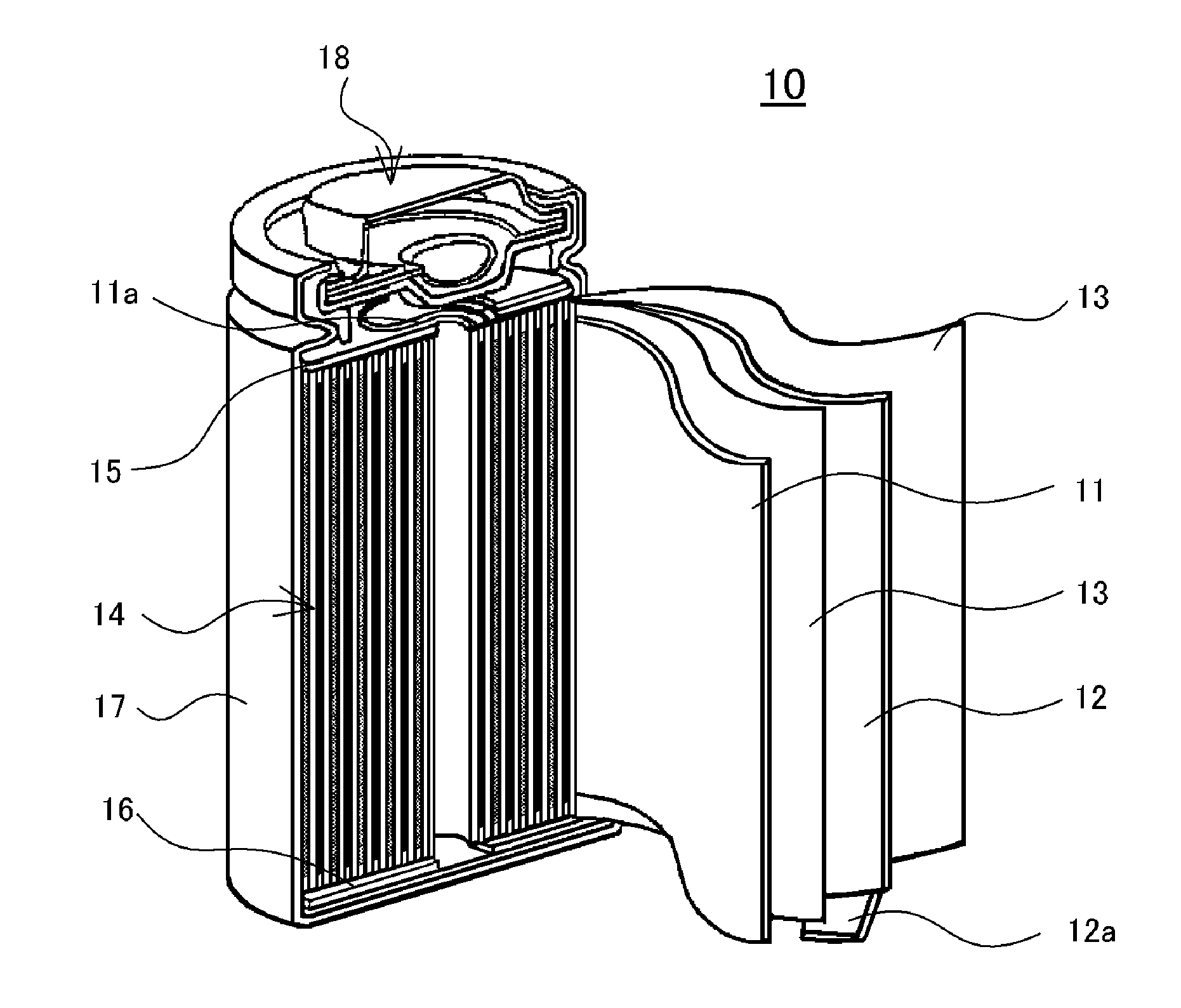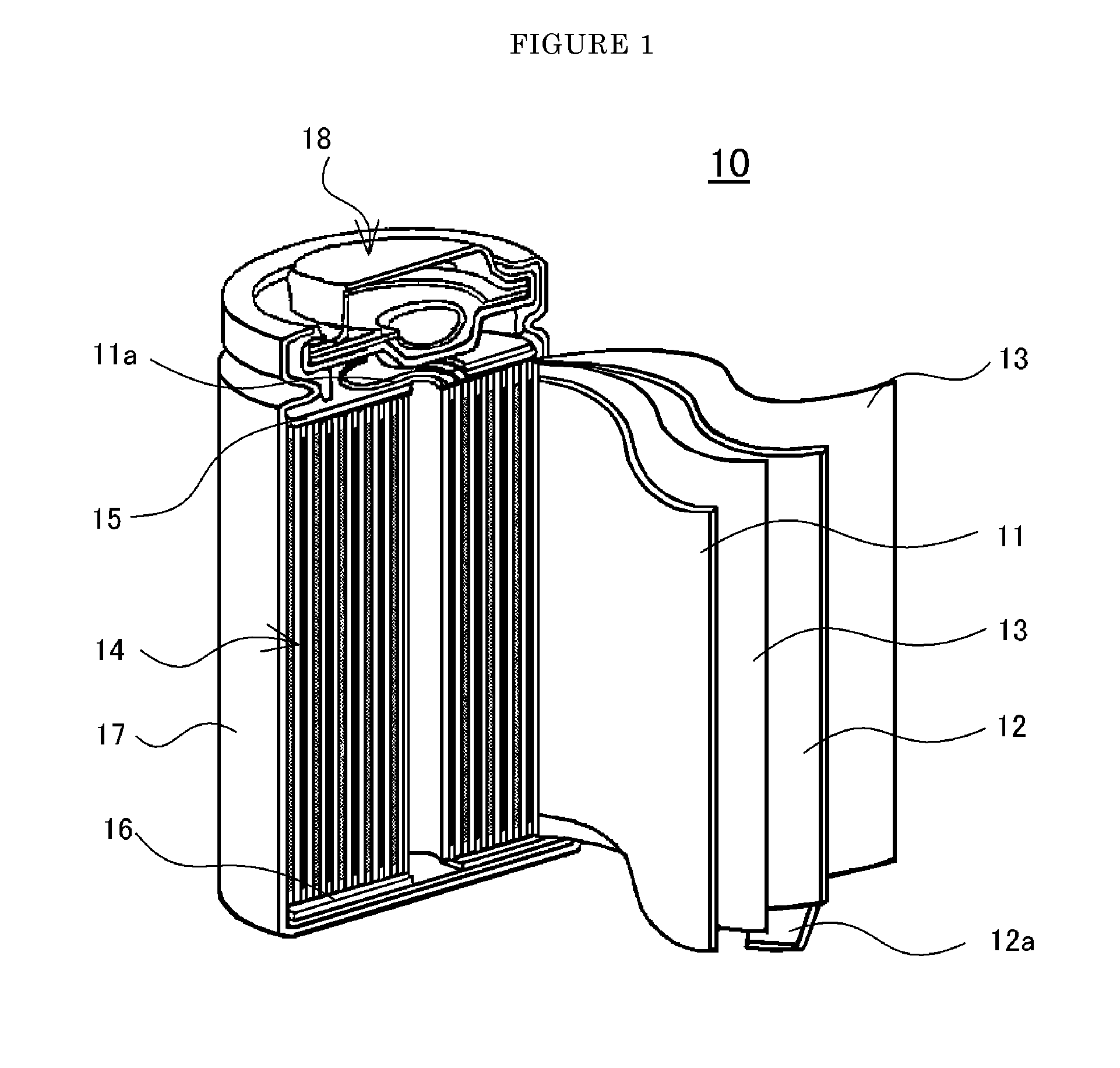Nonaqueous electrolyte secondary battery
a secondary battery and electrolyte technology, applied in the field of nonaqueous electrolyte secondary batteries, can solve the problems of low amount of cobalt in natural resources, easy degradation of positive electrodes, and high cost of cobalt, so as to reduce battery capacity, and improve high-temperature storage characteristics
- Summary
- Abstract
- Description
- Claims
- Application Information
AI Technical Summary
Benefits of technology
Problems solved by technology
Method used
Image
Examples
examples 1 to 5
[0033]In the course of manufacturing a battery in accordance with the above-described procedure, 3% by mass of pimelonitrile (NC—(CH2)5-CN) with a saturated straight chain hydrocarbon group having five carbon atoms and 1% by mass of magnesium hydroxide relative to the mass of the nonaqueous solvent were added to the nonaqueous electrolyte to manufacture the battery of Example 1. Similarly, 10% by mass of pimelonitrile and 1% by mass of magnesium hydroxide were added to manufacture the battery of Example 2. Furthermore, 3% by mass of pimelonitrile and 5% by mass of magnesium hydroxide were added to manufacture the battery of Example 3. Three percent by mass of sebaconitrile (NC—(CH2)8-CN) with a saturated straight chain hydrocarbon group having eight carbon atoms and 1% by mass of magnesium hydroxide relative to the mass of the nonaqueous solvent were added to the nonaqueous electrolyte to manufacture the battery of Example 4. Similarly, 3% by mass of adiponitrile (NC—(CH2)4-CN) with...
PUM
| Property | Measurement | Unit |
|---|---|---|
| thickness | aaaaa | aaaaa |
| length | aaaaa | aaaaa |
| length | aaaaa | aaaaa |
Abstract
Description
Claims
Application Information
 Login to View More
Login to View More - R&D
- Intellectual Property
- Life Sciences
- Materials
- Tech Scout
- Unparalleled Data Quality
- Higher Quality Content
- 60% Fewer Hallucinations
Browse by: Latest US Patents, China's latest patents, Technical Efficacy Thesaurus, Application Domain, Technology Topic, Popular Technical Reports.
© 2025 PatSnap. All rights reserved.Legal|Privacy policy|Modern Slavery Act Transparency Statement|Sitemap|About US| Contact US: help@patsnap.com


